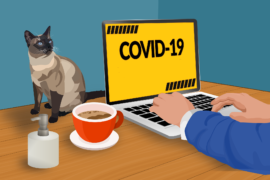Gone are the days wherein web designers just do what they commonly do when it comes to designing a webpage. Website design nowadays is not just about publishing an aesthetically looking web portal filled with either flash or java scripts. Modern website design is now closely associated with search engine optimization (SEO).
SEO now plays a vital part in website design development to ensure that the webpage being developed can be found easily by search engines. As search is now one of the major sources of online traffic, most companies are focusing their efforts in improving their website’s visibility in order to gain more organic traffic from big search engines like Google, Yahoo, & Bing.
To help you improve your website’s search engine visibility, here are few effective and easy to follow web design tips. You can either check your website if it is lacking of something or you can apply the following tips if you will find out that there are aspects of the overall design that needs to be modified.
1. Avoid using Flash or Java Scripts – Though Flash and Java Scripts can help you create more attractive web designs and applications, they can also become major causes of problem when it comes to improving your website’s search engine visibility. Search engines have difficulty reading and indexing websites laden with programming languages that are not in the scope of their algorithm. It’s better to stick with simpler designs that don’t need massive scripting manipulations.
2. Follow the Proper Website Structure Hierarchy & Navigation – To improve your SEO, you should follow the correct hierarchy of structure wherein the most important should occupy the biggest space and the less important the smaller one. In optimizing your website for search engines, the right heading tags should be observed along with proper navigation and rendering of the links and the menu. Heading tags such as H1, H2, and H3 should be used according to sizes and important menu items such as categories and main pages (i.e. Home, About, Services) should be put on the most visible area.
3. Avoid using Media or Files that can affect the Speed of your Page Load – The loading speed of your website affects its overall performance and ease of functionality. Most visitors and readers are easily turned off by slow-loading pages and usually don’t have the patience to wait. Your image files and webpage documents should be scaled down so that they will not hamper with your page loading speed. Avoid using bitmap files for photos and only use those ones with the recommended format such as .jpeg, .gif, .png and the like. For advanced users, a tweak on your site’s .htaccess file can also help increase its loading speed (SEO and Web Design experts are more suitable to implement this modification).
4. Make use of Important Keywords – Effective website design nowadays should make use of relevant and important keywords. Proper keyword-placement should also be observed. They should be put on the title tag, navigation and menus, URL, alt text for images, image descriptions and file names, title attributes in links, header tags, and other important parts of a webpage wherein they can be properly inserted. Always remember though that keyword overstuffing and overusing can trigger some search engines’ spam filters which can cause your website to be penalized. Be careful not to over optimize as Google nowadays is very strict and most websites which are caught doing over-optimization tactics are flagged and de-indexed.
5. Normalized your URLs – Avoid duplicate pages by normalizing your website URLs. For example, you can instruct the search engine bots that your website’s standard URL is only http://www.mywebsite.com/, and not www.mywebsite.com or http://mywebsite.com. Most search engines index all these three pages separately which can lead to duplicate contents. Google actually calls this as URL Canonicalization. To learn more about URL Canonicalization, read this blog post by Matt Cutts.
If you find this article helpful and informative, you may subscribe to our Dallas Internet Marketing eNews & Updates. Go to our blog’s homepage, look for the subscription box at the bottom right corner, enter your email, and hit subscribe.




